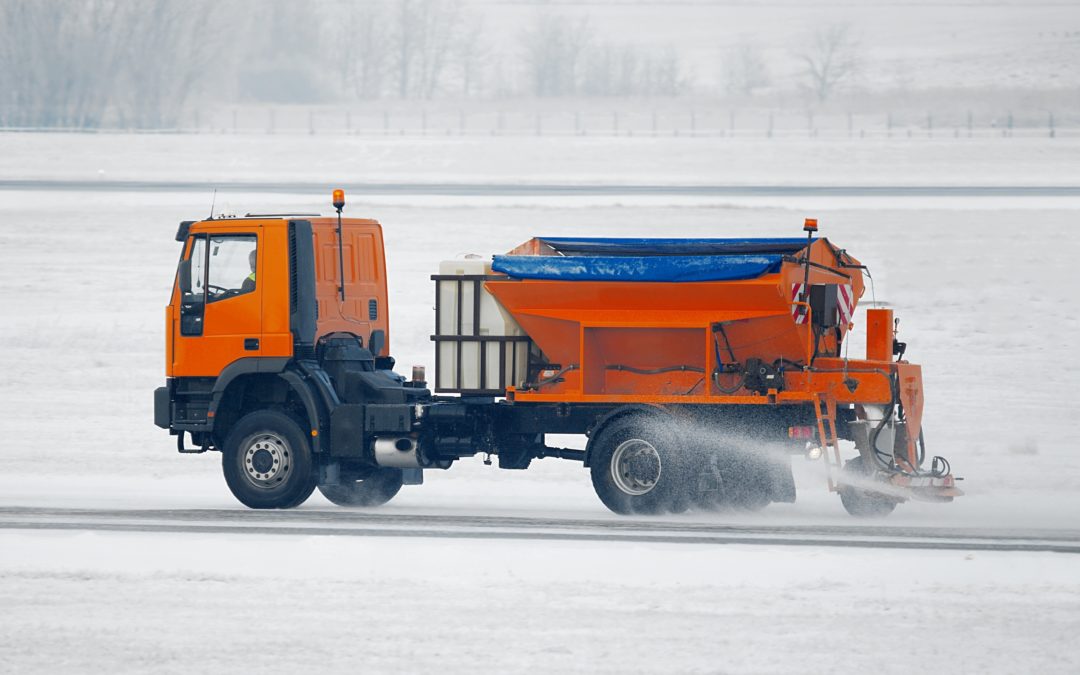You may have heard that salting asphalt roads, driveways and parking lots damages the pavement. There’s good news and bad news.
Hot mix asphalt will not deteriorate when salted for de-icing purposes, but de-icers may exacerbate the effects of the freeze-thaw cycle and worsen existing potholes.
Concrete driveways or parking lots are another story. Salt can damage the molecular bonds holding the concrete together, resulting in deterioration, weakened surfaces and compromised weight-bearing capacity.
Asphalt driveway and parking lot owners shouldn’t celebrate prematurely though. Using rock salt to de-ice your driveway, parking lot or access roads can have negative consequences for local groundwater and living things, including animals and landscape features.
What Are the Negatives of Salting Asphalt Pavement?
Hot-mix asphalt is comprised of sand, petroleum and stone aggregate to maximize its stability and durability. One of asphalt’s beneficial attributes is a natural resistance to the potential damages of the freeze-thaw cycle. The asphalt formula also makes this type of pavement resistant to damage by salt.
However, if asphalt paving is already in a degraded state, such as being riddled with potholes and cracks for example, the salt may potentially worsen damage caused by the freeze-thaw cycle. Salt will melt the water, which will stay liquid long enough to penetrate deeper and in larger quantities than it would if it were not salted. When the water does eventually freeze, it may further expand cracks and deepen/widen potholes.
The salt itself isn’t the root cause but can be a contributing factor if the asphalt paving is poorly maintained or damaged prior to salting.
Concrete, on the other hand, is vulnerable to the slightly acidic nature of salt. Not only does salt damage the bonds that make concrete solid, but concrete’s propensity for freezing at an accelerated rate compared to asphalt paving means more salt must be used to de-ice concrete roads, parking lots and driveways.
Negative Environmental Consequences of De-Icing With Salt
The effects of salt runoff are significant enough to be measurable. The practice has already led to salinity and chloride levels in rivers, lakes and groundwater in areas where salt is heavily used for de-icing.
American roads are covered with an estimated 20 million tons of salt each winter. Much of that salt gets mixed in with melted ice water and drains off into landscaping, sewers, streams, rivers and lakes.
A 2008 study in New York’s Dutchess County found that 48 percent of wells had sodium concentrations that exceeded the Environmental Protection Agency’s (EPA) safety thresholds. Authorities warned residents who suffered from high blood pressure to avoid drinking well water as a result.
The melted saltwater runoff also increases the chloride content in the bodies of water where it ends up, damaging freshwater aquatic life. By 2009 roughly 40 percent of streams in urban areas already had chloride levels that exceeded the EPA’s safety guidelines.
Salt can also damage trees and vegetation when it drains off roads or splashes on vegetation when cars drive through puddles of salty water.
What Are Some Alternatives to De-Icing With Salt?
In an ideal world you wouldn’t need to use a de-icer at all, but if you must you can try the many environmentally friendly solutions available today. Consider using sand to improve traction or look for organic, salt-free de-icers at your local hardware store. Some people also use urea, ashes from their fireplace or snow-melt mats.
If you’re a business owner with an asphalt parking lot or a homeowner with an asphalt driveway, you can salt your paved areas without damaging your asphalt as long as there aren’t already cracks or potholes. You can reduce the amount of salt you use by mixing it with sand or another traction-improving substance to supplement the de-icing effects.
It will be worth your time to check the condition of your asphalt before winter sets in and you are forced to implement some kind of de-icing routine. Having cracks and potholes filled prior to the onset of the freeze-thaw cycle will help prevent the formation or worsening of potholes and should allow for safe de-icing of your paved surfaces.
If your paved driveway or parking lot is concrete, proceed with caution, and consider switching to asphalt before next winter!
Let Us Make Sure Your Asphalt Is Ready for Winter
If you want to repair cracks and potholes ahead of the winter snows, contact Lakeridge Paving. We can quickly patch up potholes, seal cracks or apply asphalt overlays to minimize water penetration and safeguard your paved surfaces from the damaging effects of the freeze-thaw cycle. Call the Lakeridge Paving contractors nearest you to schedule an estimate:


